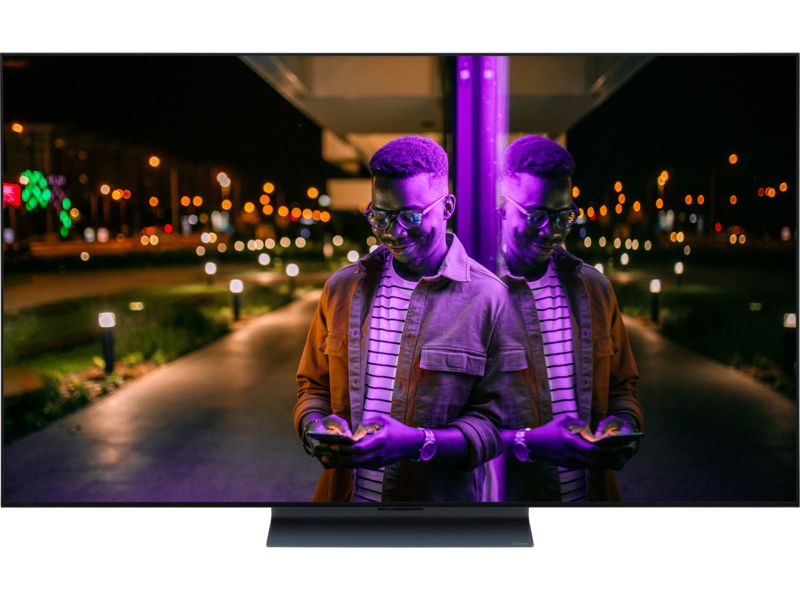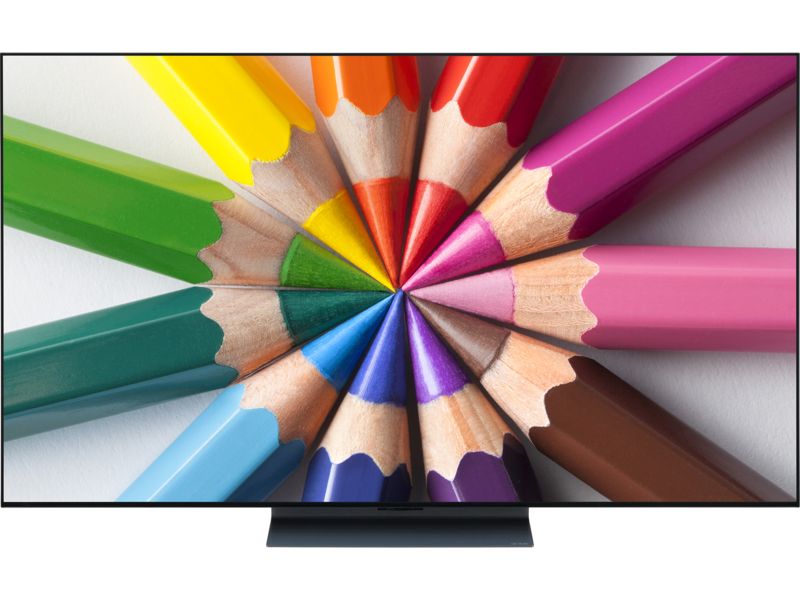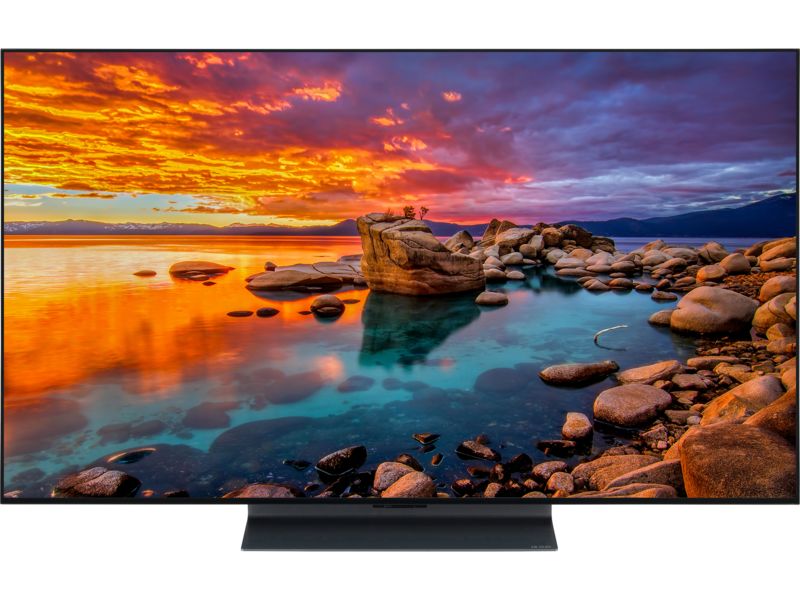By clicking a retailer link you consent to third party cookies that track your onward journey. If you make a purchase, Which? will receive an affiliate commission which supports our mission to be the UK's consumer champion.
How to hear your TV better

If you've ever sat on the sofa straining to hear the hushed conversation in the latest detective thriller, you're not alone. Not being able to hear your TV well is a common complaint, but what's to blame and how to do you fix it?
Flatscreen TVs are much maligned for having thin speakers that lack the power of the deeper ones inside the colossal big-box CRT TVs of yesteryear, but it would be unfair to lay all blame at modern TV's narrow feet.
Here we explain some of the causes of poor sound, take you through the settings you can adjust to improve it and help you find out if your own hearing may be stopping you from enjoying your favourite shows to the fullest.
The quality of your TV can make a difference, so pick one of our best TVs the next time you upgrade.
What causes the problem of muffled TV sound and quiet speech?
Sometimes it's the TV. Some models are woeful, with thin sound that has about as much punch as a toddler – but that's not always the case. Each year we test TVs with expansive, rich audio that strikes a beautiful balance between the low and high tones, with plenty of mid-range in between to carry melody.
To find the root of the problem we need to look a little deeper.
A major complaint with TV sound is the extreme differences between dialogue and action sequences. A common scenario finds people constantly adjusting volume to compensate for the spikes and lulls in loudness. Characters conversing is too quiet so the volume goes up. But if it's followed by an action sequence or something with booming background music, then it's far too loud and the volume needs to drop again; until the next conversation.
These extremes are caused by something called ‘dynamic range’. It’s a technique used by sound mixers to inject some excitement into what you’re watching, and better convey the difference between quiet and loud sounds.
A grenade explosion is more than eleven times louder than speech. Even if a TV could output this 180-decibel blast, you wouldn’t want it to – it could pop your eardrums. So to achieve that sense of loudness, other aspects – such as speech – are made quieter.
A cinema, with its plethora of speakers, can handle these shifts. But a TV will have a harder time coping.
This brings us to the second part of the problem. To a certain degree, a TV is at the mercy of how sound is mixed. Just as a video editor cuts the visual action to create a sense of flow and drama, a sound editor adjusts audio levels to articulate tone and atmosphere.
Fear not though, TVs aren’t completely at the mercy of uncompromising sound editors and ferocious mixes. There are settings that can mitigate the issue without you needing to buy anything new.
Discover the TVs that aced our tough tests – see all our television reviews.

How to improve your TV sound
- Most TVs have different sound modes to choose from and one of them will likely prioritise dialogue. It's often called 'Clear Voice' – make it your go-to sound mode.
- Choosing a new sound mode changes several things behind the scenes, but some TVs let you tinker even further with a built-in equaliser. This lets you emphasise bass, mid-range or treble. Boosting the treble should mean that higher tones, including speech, becomes clearer.
- We mentioned dynamic range earlier and some TVs will let you adjust how wide that range is. Choose a narrow range, sometimes called 'compressed', and the volume difference between the loudest and quietest sounds will be reduced.
- Most TVs output in stereo but the audio signals they receive are often intended for five speaker surround-sound setups. The TV downmixes the sound to make the audio work with two stereo speakers. You can't change this, but it's worth checking your downmix is set to stereo, otherwise the TV could be sending dialogue to a speaker that doesn't exist.
As well as settings you can tweak, some TVs have additional technology that can make your listening experience that bit better. Check if your TV has these, or choose a TV that does the next time you buy one.
- Independent volume control means you can connect a pair of headphones and adjust the volume coming through them – this can be done separately to the TV speakers' volume. So everyone can be happy with the loudness
- Automatic volume levelling reacts to dramatic shifts in volume, keeping it consistent so you won’t get your head blown off every time there’s an ad break or you change channel
- Bluetooth lets you wirelessly connect headphones, hearing aids or a loop system. Some TVs can output to Bluetooth headphones and the TVs speakers at the same time.
Having trouble seeing your TV? Check out the best TVs for people who are blind or partially sighted.
What to do if you need help hearing your TV

For anyone with hearing loss, treble can be the most difficult pitch to hear. The two audiologists we spoke to for this guide told us that trouble hearing TV dialogue was one of the most common reasons for people to visit a hearing clinic.
The staggering amount of choice of what to watch makes choosing something difficult enough. If there's more disagreement over what volume is best, then a hearing test could be in order for you or a family member.
Our experts recommended Shoebox Online. It's a free, simple way to test your hearing at home and is a good starting point to see if you need help hearing.
But ultimately, if you can't hear your TV, even with the volume turned right up, then speak to your GP or head to a hearing clinic for a full test.
Tech tips you can trust – get our free Tech newsletter for advice, news, deals and stuff the manuals don't tell you
Using a hearing aid with your TV
A diagnosis of hearing loss doesn't mean you'll be straining to hear your TV or reading subtitles for years to come. We spoke to the RNID (Royal National Institute for Deaf People) to see what specialist devices are available to help people hear their TV.
- If you don't wear hearing aids then a pair of wireless headphones are a great option. If you have a TV with independent volume control then you can adjust the volume on the headphones separately from the TV speakers, so everyone has volume they are happy with.
- Many newer hearing aids have Bluetooth built-in and you can connect these straight to a Bluetooth TV. This effectively turns your hearing aids into a pair of TV headphones.
- If your hearing aids don't have Bluetooth, or your TV doesn't, then you can buy a loop system to connect to the TV. Your hearing aids will then connect to that instead of the TV directly, but the result will be same – TV sound through your hearing aids.
There are other devices to consider, too, such as the Bellman Maxi Pro streaming device. It uses portable microphones that boost the sound of whatever you put them near – whether that’s your TV, radio or dinner-table conversation. They work with hearing aids and headphones.
TV manufacturers are getting in on the act, too. The Sony Wireless Handy TV Speaker SRS-LSR20 looks like a radio, but it's designed for TV audio. It’s like a sound bar that the person with hearing problems places close to where they’re sitting, rather than putting it under the TV.
The high street is packed with places to get a hearing aid. Take a look at our list of the best hearing aid providers
Sound bars and headphones to help you hear your TV

A Best Buy sound bar gives you better audio than TV speakers any day of the week. So will a pair of good headphones, particularly those designed for TV audio.
We've picked out a few devices that do a solid job of picking out dialogue.
Headphones
- Sennheiser RS 175 headphones - these headphones are designed for home use, particularly with the TV. Read our Sennheiser RS 175 review to see if they are worth their steep £229 price.
- Sony WH-CH720N headphones - these Bluetooth headphones can be used outdoors, unlike the RS 175s, but does this jack-of-all-trades approach make them the best option for TV sound? Here's our Sony WH-CH720N review.
Alternatively, check see all our headphone reviews to find a pair that suit you and your bank balance.
Sound bars
- LG SP11RA – at £799 this sound bar is one of the most expensive around. For the money you're getting a soundbar, subwoofer and two rear speakers for a surround sound experience. It needs excellent sound to come from all those speakers to be worth the money though. Read our LG SP11RA review Sonos Arc review to see if the extra features are worth the extra money.
- Samsung HW-Q700C – this traditional sound bar has a more palatable £319 price, but can its sound quality come close to a model more than three times its price? Here's our Samsung HW-Q700C review.
For more options, take a look at all of our sound bar reviews.



